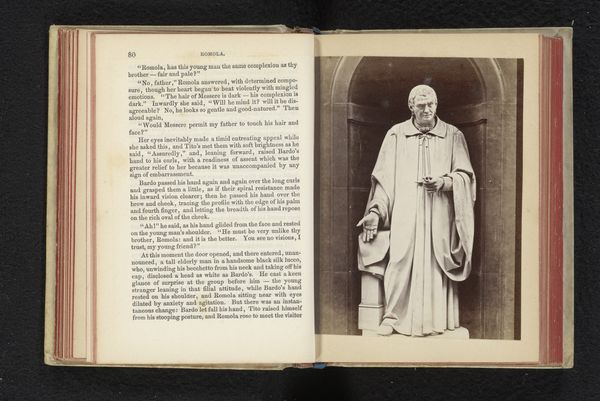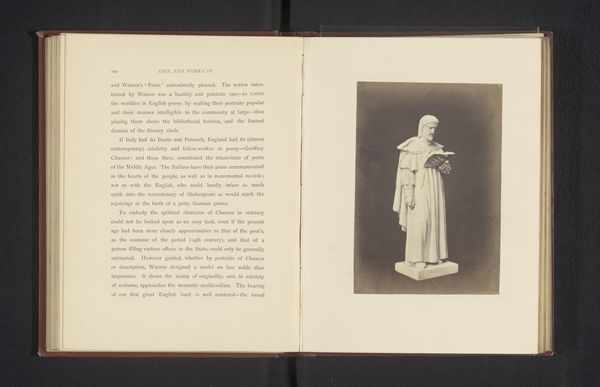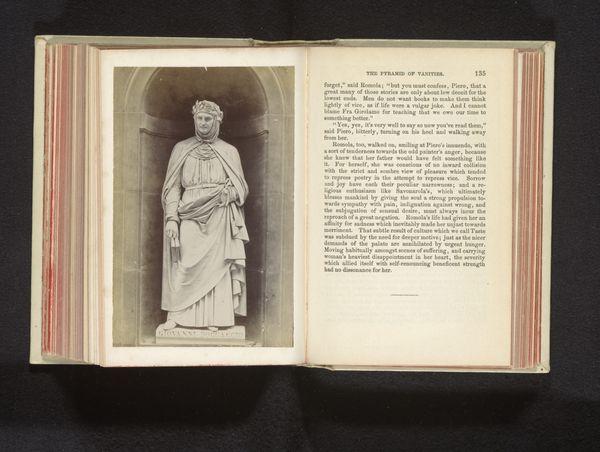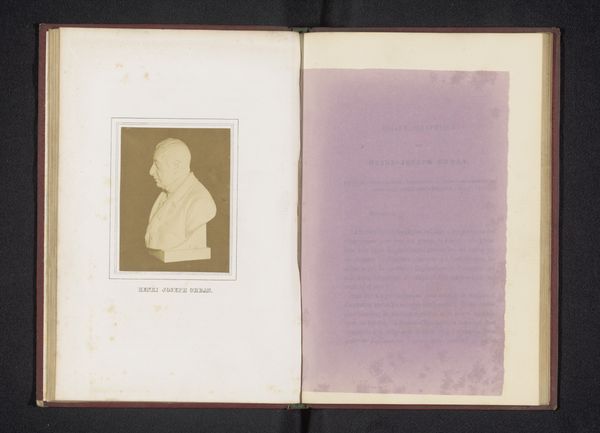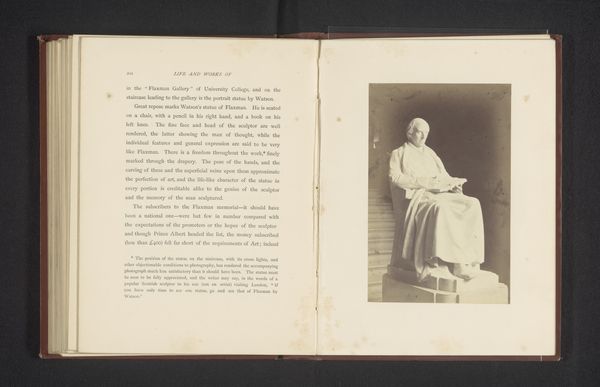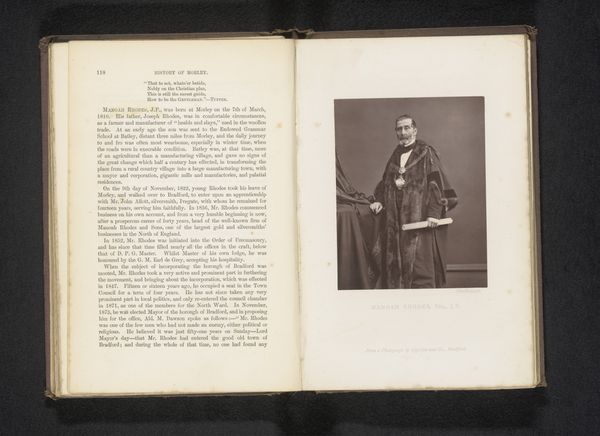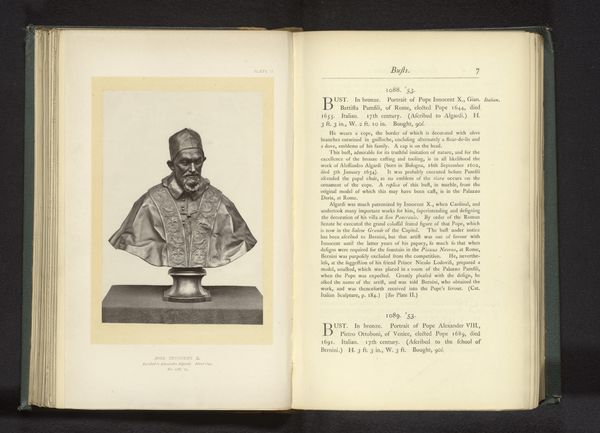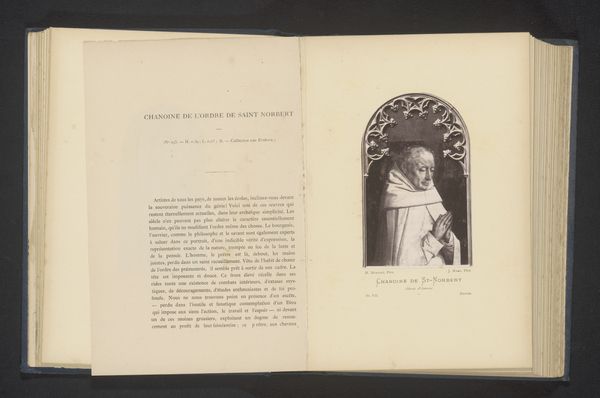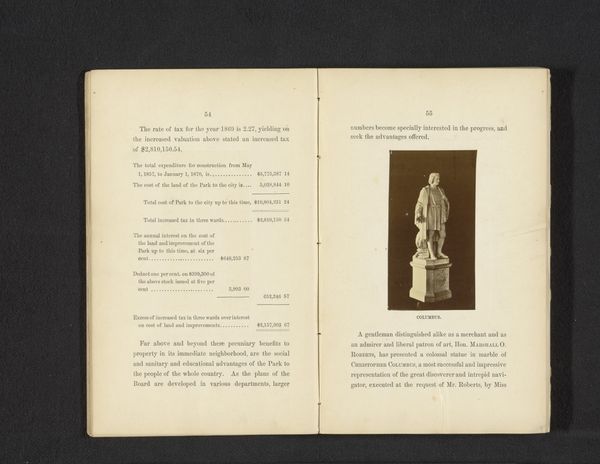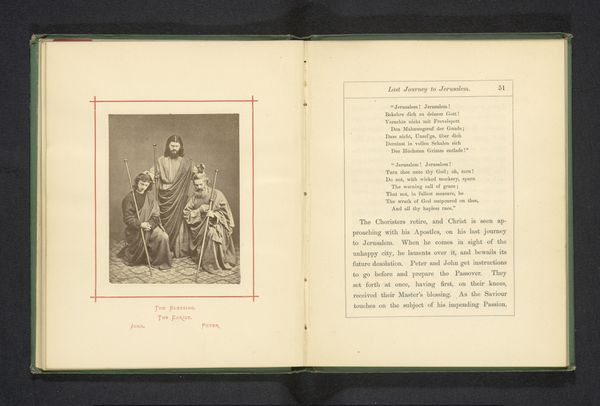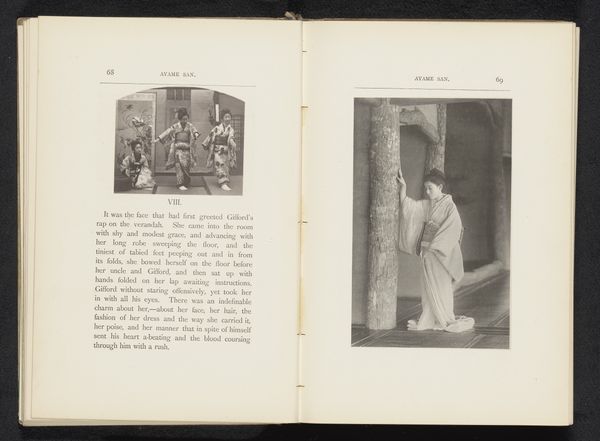
Standbeeld van Giotto buiten de Galleria degli Uffizi te Florence before 1887
0:00
0:00
print, photography, sculpture
#
portrait
# print
#
photography
#
sculpture
#
cityscape
#
italian-renaissance
Dimensions: height 143 mm, width 101 mm
Copyright: Rijks Museum: Open Domain
Curator: Looking at this photographic print from before 1887 by Fratelli Alinari, we see a statue of Giotto outside the Galleria degli Uffizi in Florence. The image encapsulates a piece of Italian Renaissance history. Editor: My first thought is that it evokes a sense of quiet monumentality, a sort of still solemnity in a busy cityscape. The lighting casts deep shadows, and there is an isolating effect to the tight frame of the open book on the sculpture, creating almost a shrine to this celebrated figure. Curator: Right, Giotto’s role is undeniably pivotal in art history, serving as a lynchpin in the transition between the medieval and Renaissance periods. How did cultural institutions like the Uffizi impact how Giotto's work was received? The physical positioning of this statue speaks volumes about public veneration. Editor: Absolutely. Locating art in urban spaces, especially sculpture, inevitably connects it to national and civic identities. It creates a focal point for shared heritage. We also should think about whose gaze is centered here; the Uffizi has always shaped what narrative of Renaissance is being offered and for whom. Curator: Indeed, how this public artwork may celebrate Giotto himself, but is that representative of artistic practices generally or other contributors from the era. Editor: I'd also observe the choice to frame this photo within the leaves of a book; it reinforces ideas of learning, heritage, and narrative surrounding Giotto. The placement emphasizes his enduring legacy while prompting us to look critically at how legends are created and perpetuated in culture. Curator: Considering the Alinari brothers were significant chroniclers of Italian art and architecture, this work gives great insight into how images help to solidify Giotto’s prominent position in art history. Editor: Reflecting on this piece reminds me of the complex and contested nature of history, especially as represented by the images. It invites us to question and explore the broader social currents that shaped art and its meanings for many generations.
Comments
No comments
Be the first to comment and join the conversation on the ultimate creative platform.

